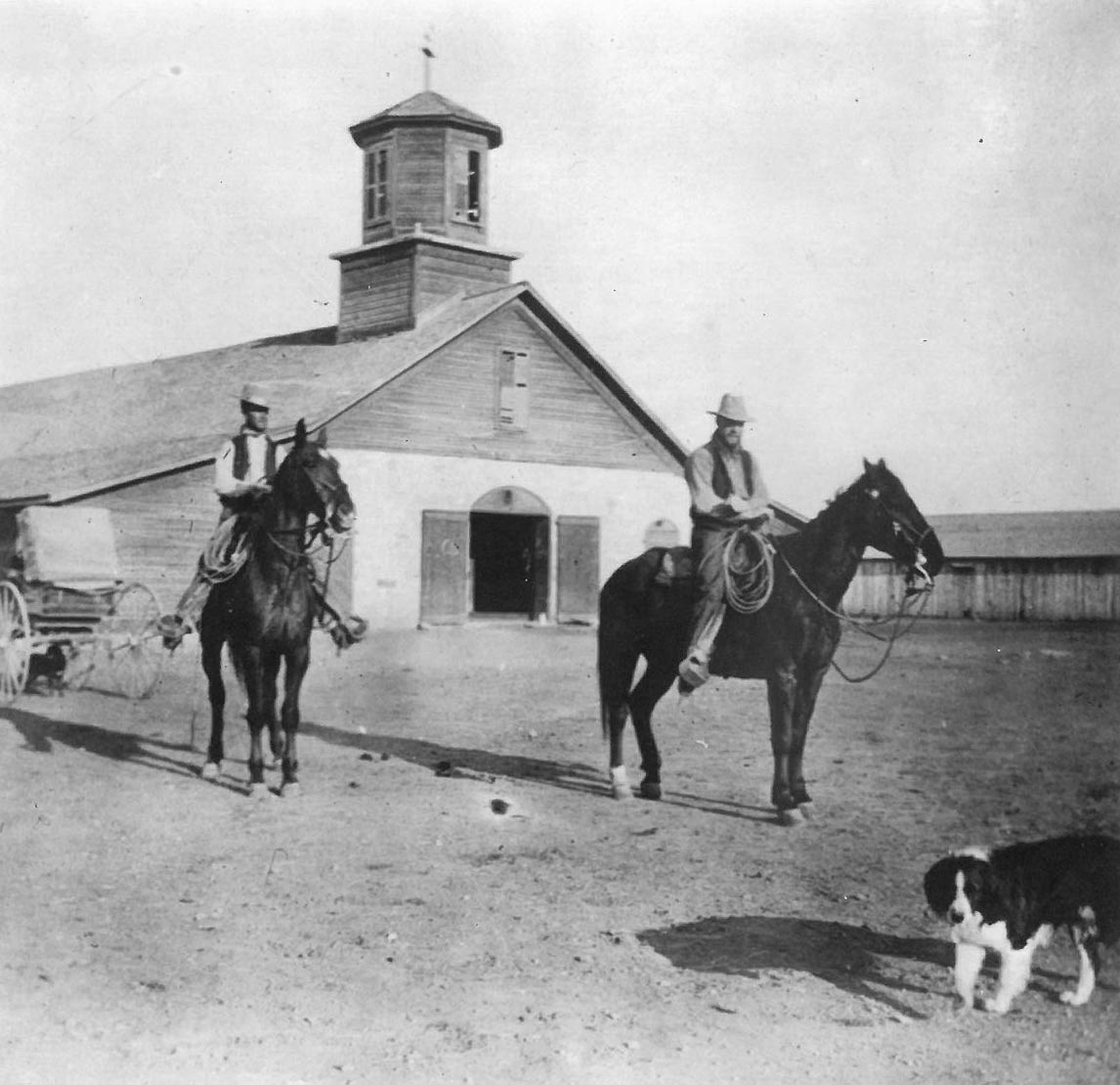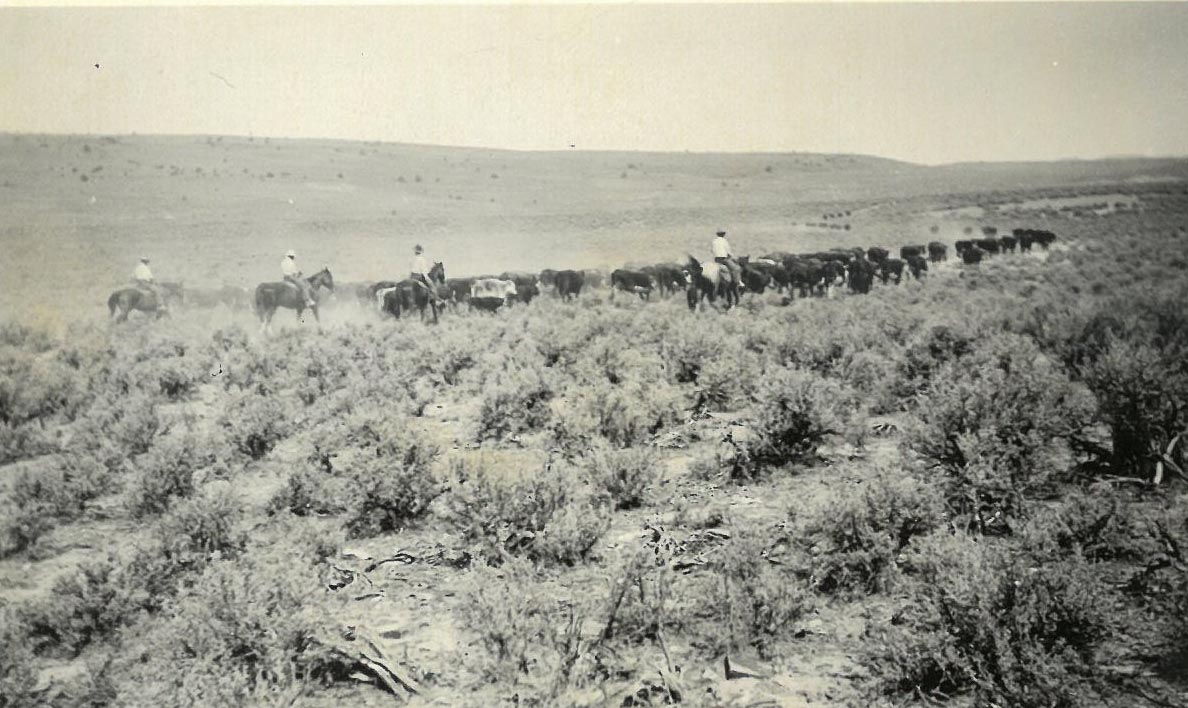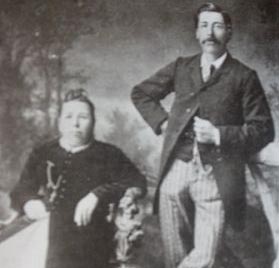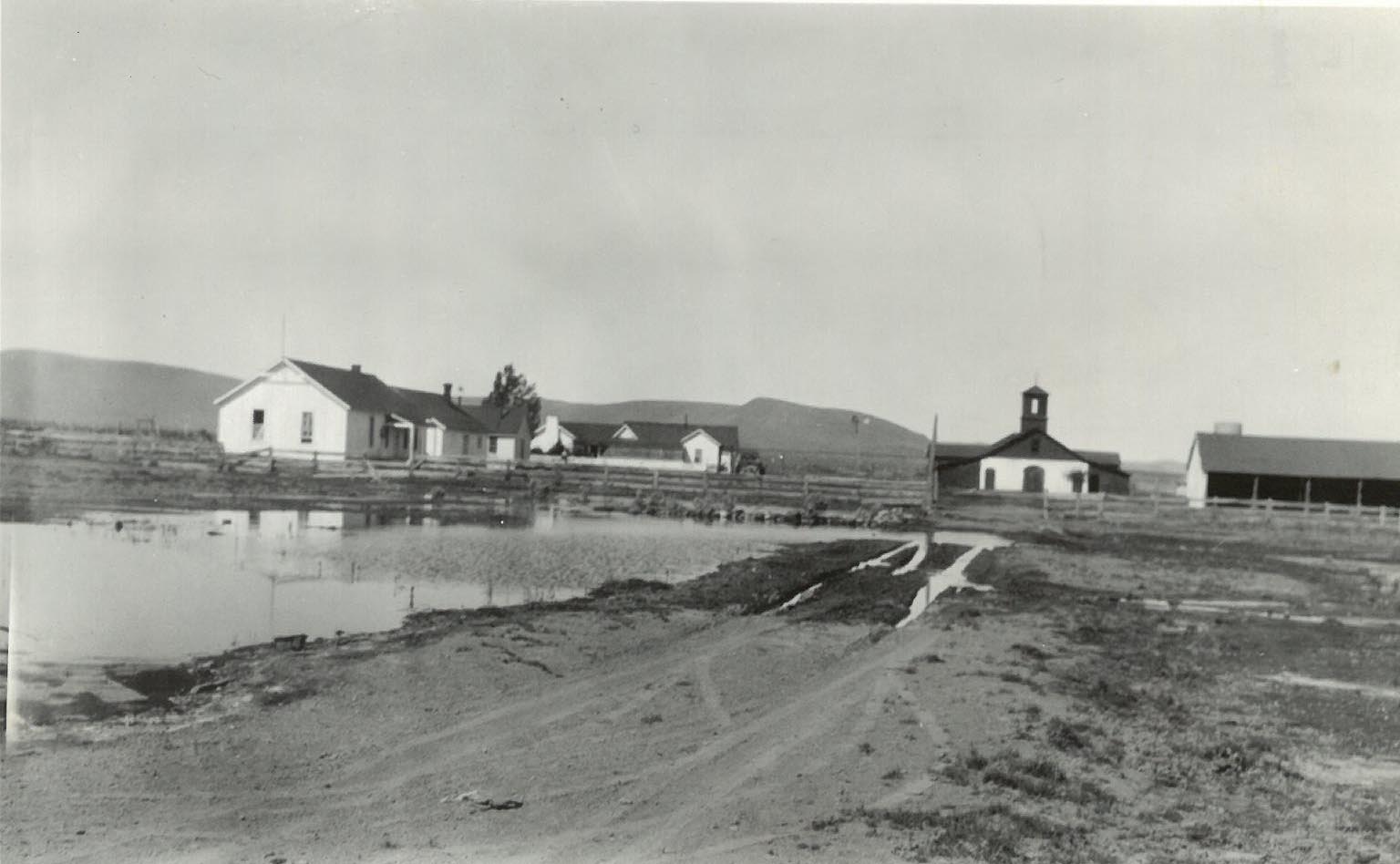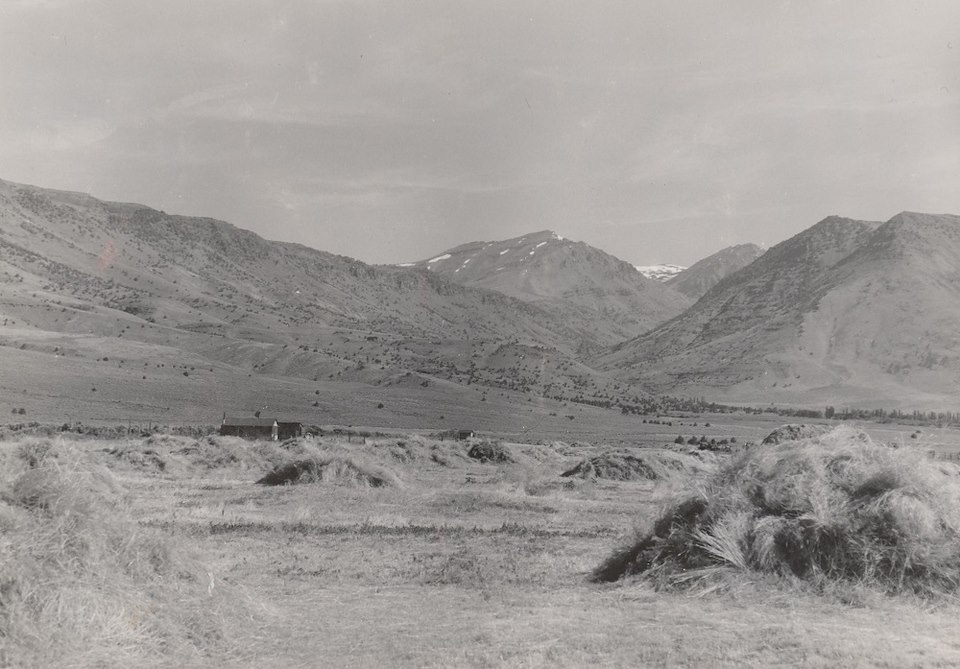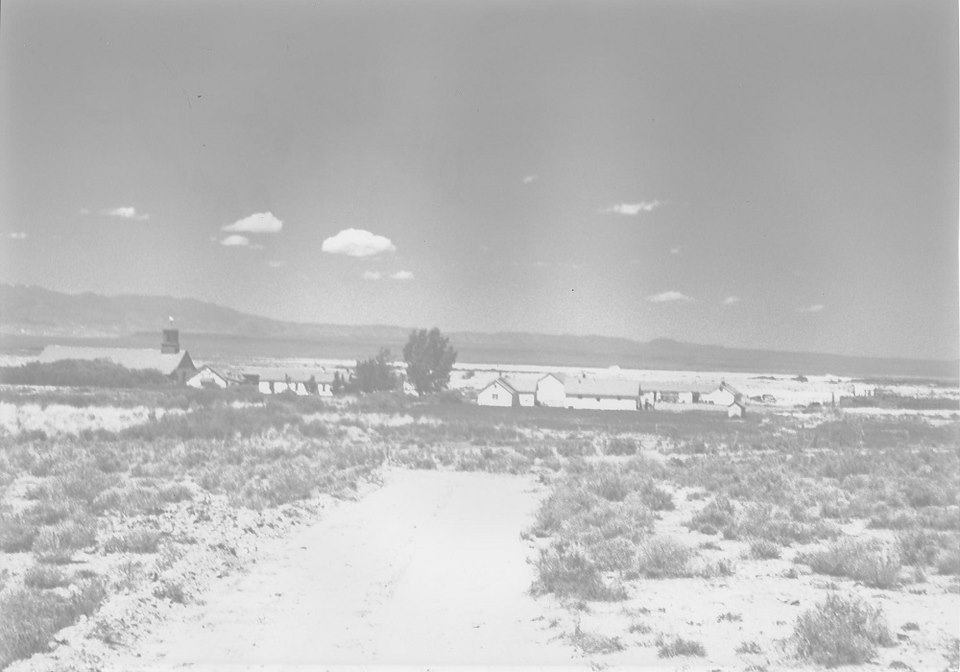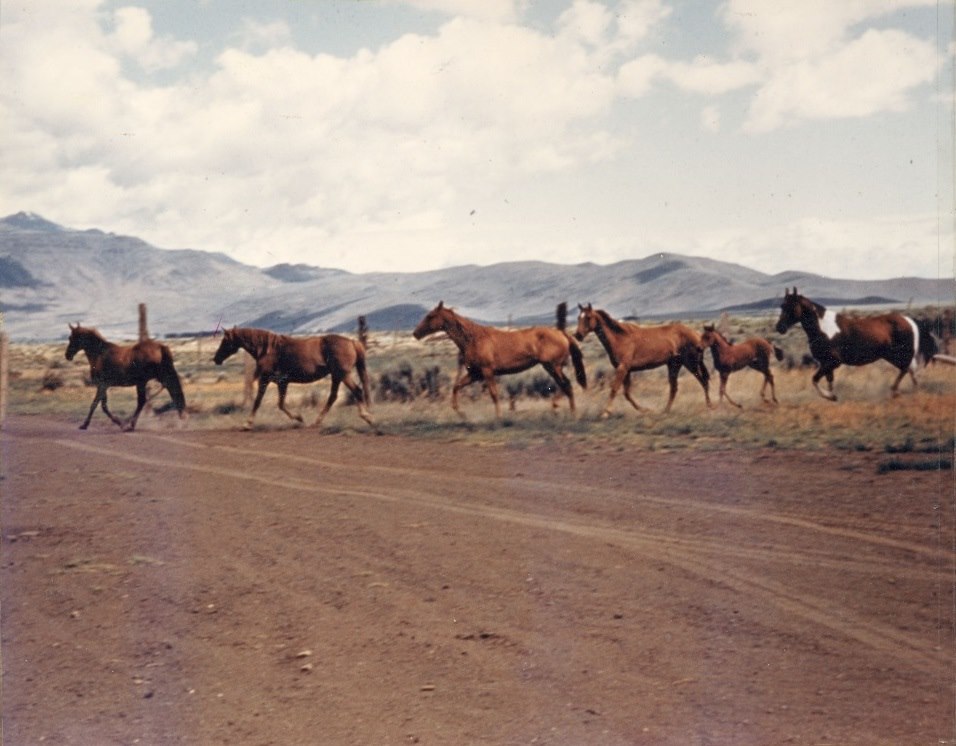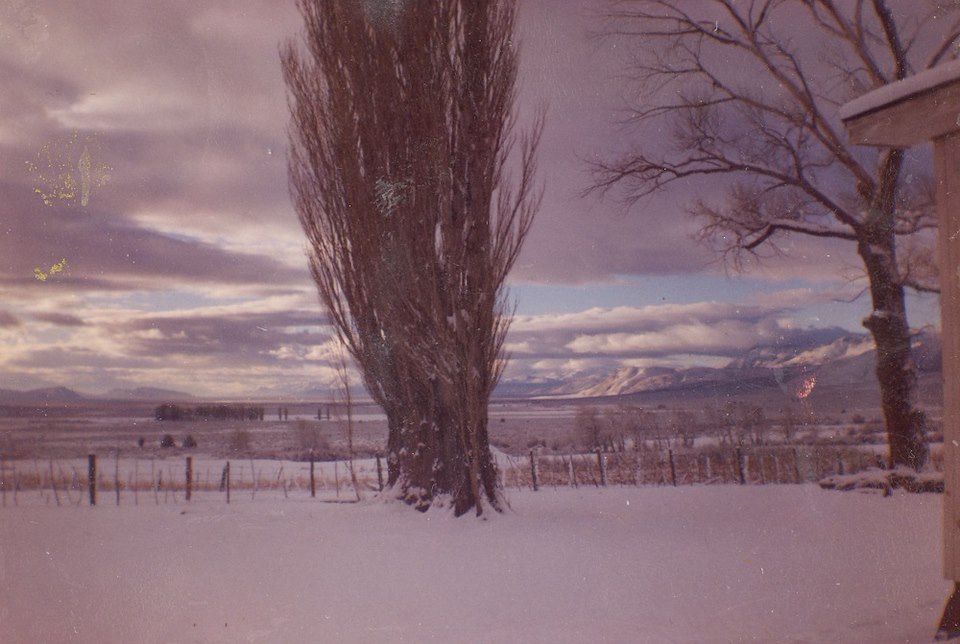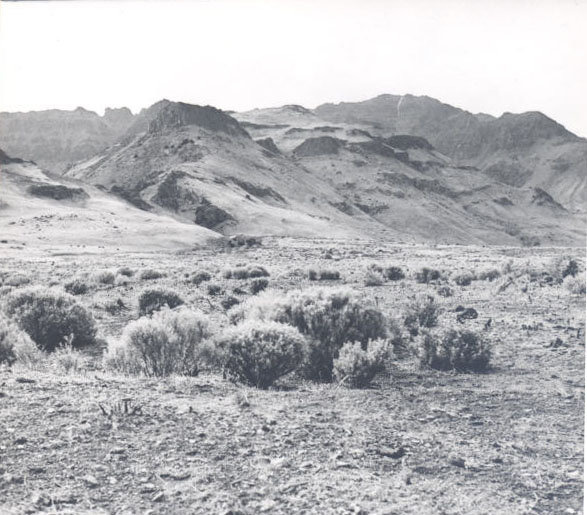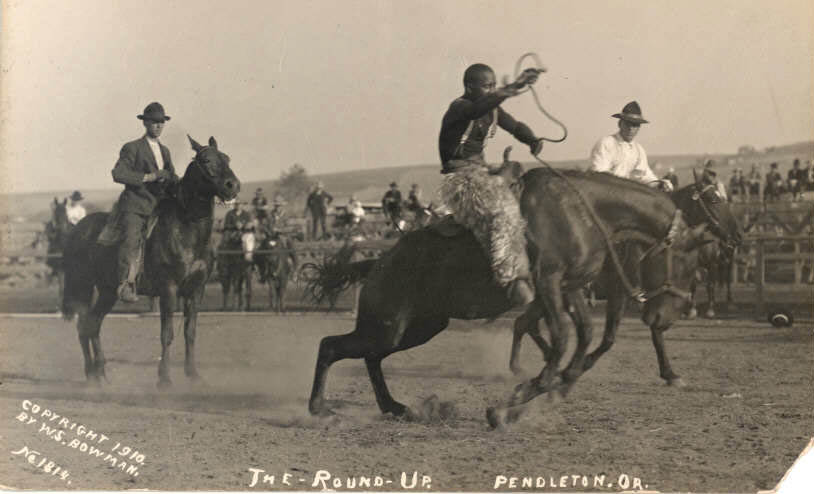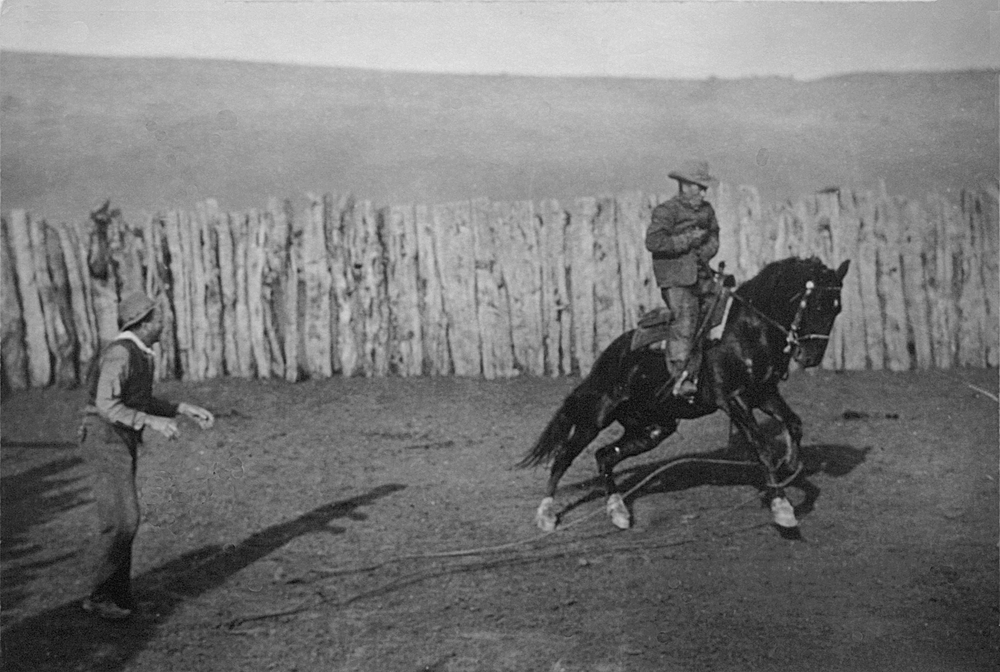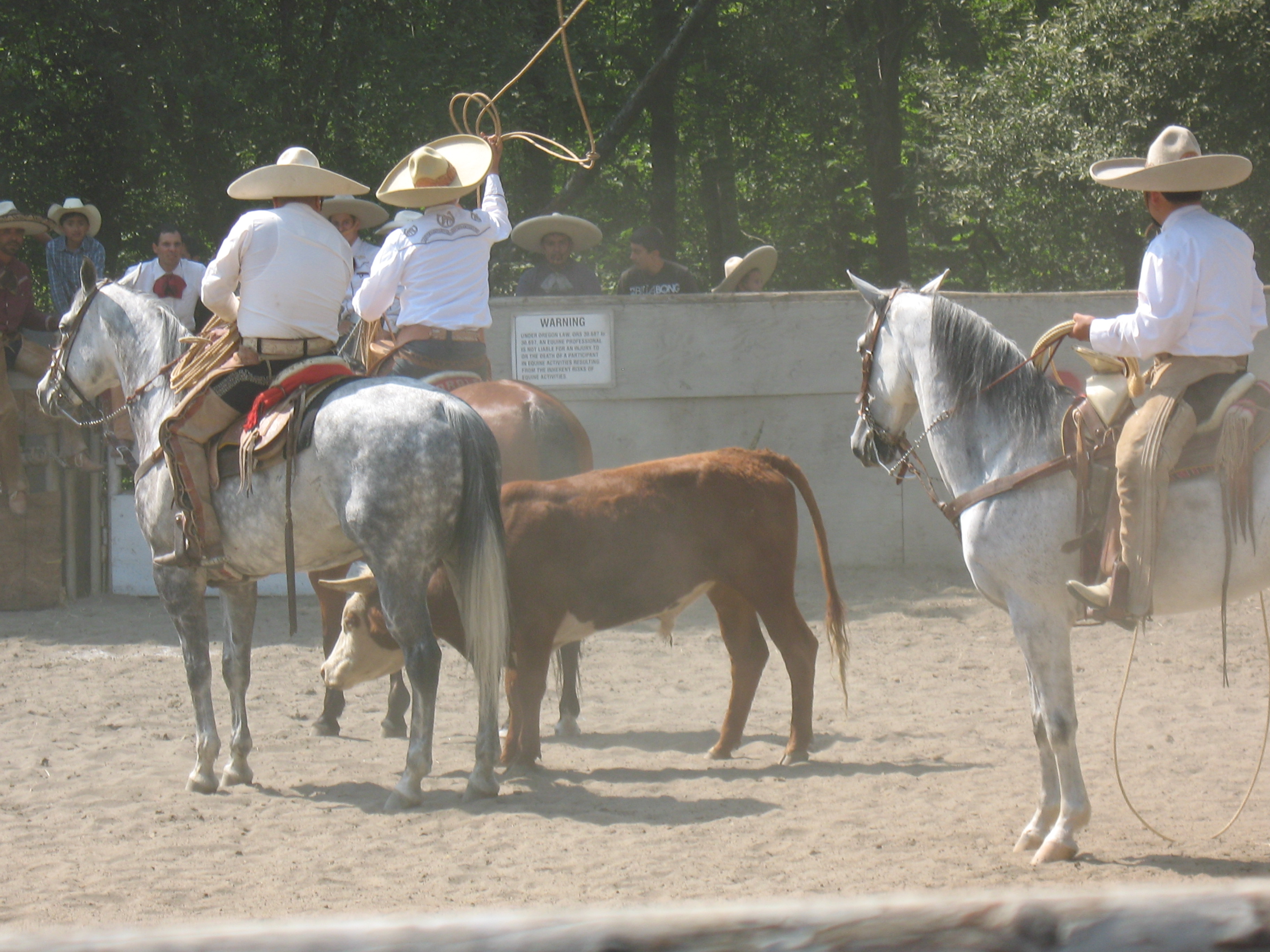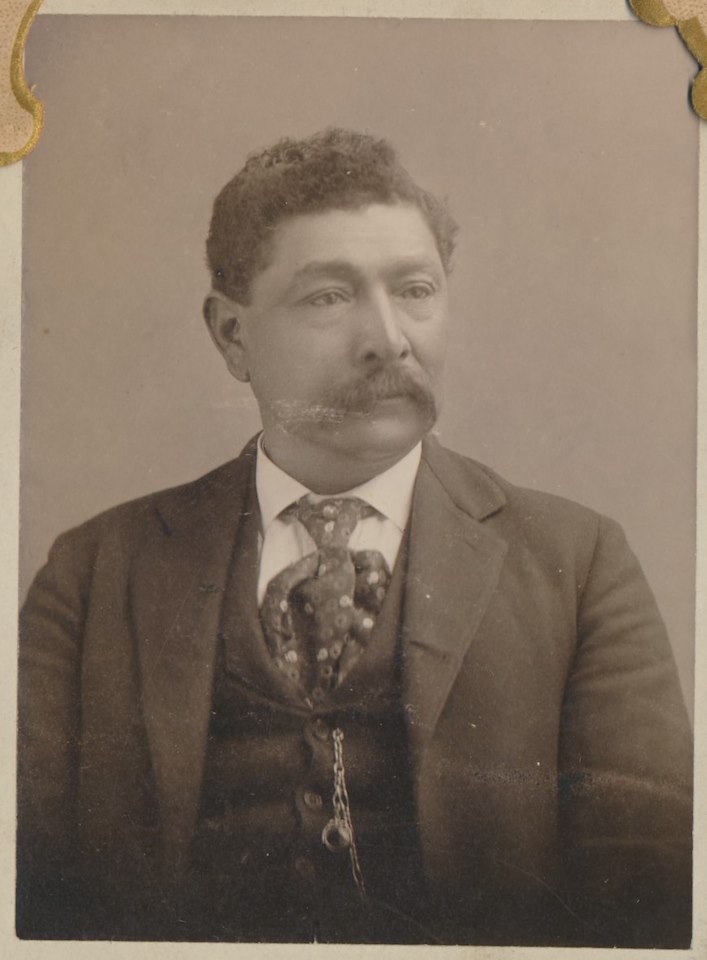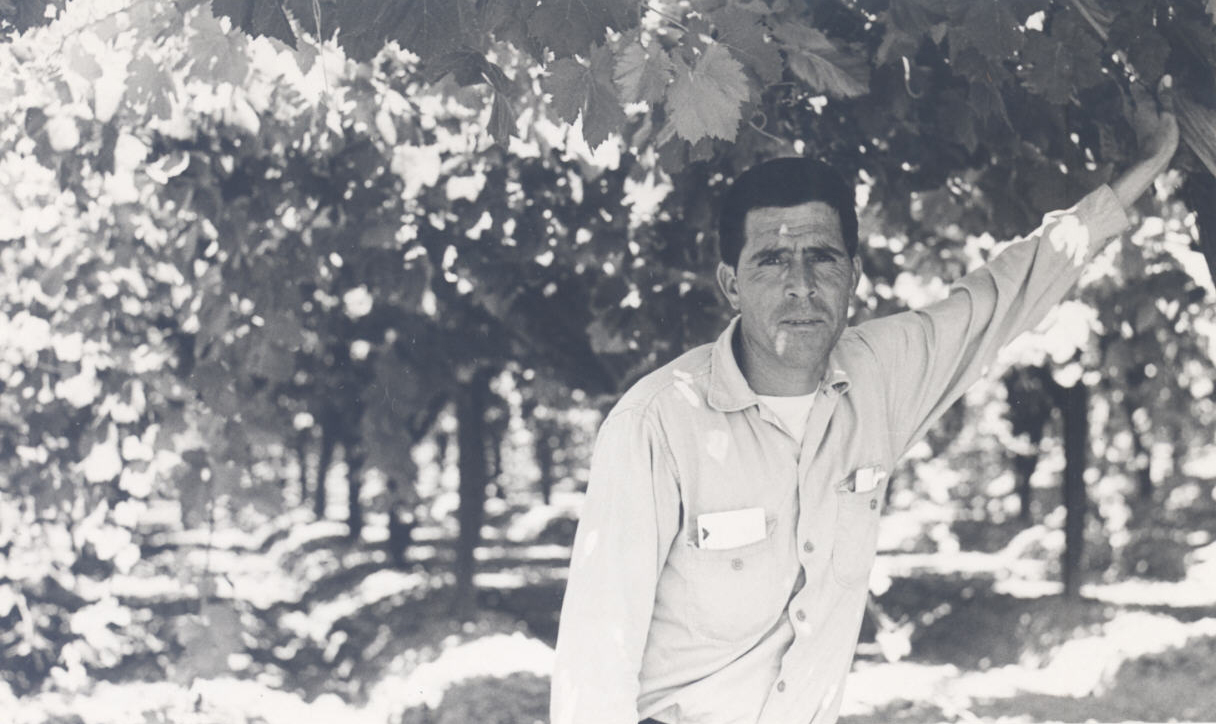Renowned for his exceptional riding and roping skills as well as his stylish good looks, Juan Redón excelled as Southeastern Oregon’s first “buckaroo boss,” leading buckaroos on some of the region’s largest cattle ranches for more than twenty years. The term buckaroo, used throughout the American West, is derived from the Spanish word vaquero, similar to a cowboy.
Juan Redón was born around 1857, in San Juan Capistrano, California, the son of Baltazar Redón and Maria Silvas, both of Mexican ancestry. In the summer of 1869, Redón arrived in southeastern Oregon with cattle baron John S. Devine, a group of vaqueros, and 2,500 to 3,000 head of cattle to begin a stock raising business. Together, they established the Whitehorse Ranch —considered to be the first ranch in today’s Harney County—on the site of a short-lived U.S. Army post, Camp C.F. Smith, in the Alvord Basin east of Steens Mountain.
As Devine’s operations expanded, so did Redón’s responsibilities. As “boss cow-man” for Devine, Redón managed buckaroos at Devine’s Whitehorse, Alvord, Mann Lake, and Juniper ranches until Devine sold out to Henry Miller and Charles Lux’s Pacific Livestock Company in 1889. Redón remained with Miller and Lux as buckaroo boss at the Whitehorse Ranch for several years. There, buckaroos praised his management of “one of the best caviadas [herd of horses for buckaroo use] in the west.”
Redón’s skill with his riata—a long, rawhide rope—was legendary among buckaroos, and many recognized him as the best roper they had ever seen and “the best cowboy of them all.” Buckaroo Jinks Harris remembered his as “the best known, not only here but in California and every place…. And he used about an 80 or 90-foot rope, and he used it all.” “I've seen him when we was branding calves, he'd rope for hours and never miss a shot,” said buckaroo Buck Miller. “Now that's something that they don't all do, the best of them.”
Buckaroos recalled Redón roping and removing a wild herd of elk from Devine’s personal game preserve on the east side of Steens Mountain. A team had assembled freight wagons with crates to haul the elk to San Francisco, and Redón—by himself—“roped 'em and drug 'em right in, just like you would a cow.”
Redón was as renowned for his appearance as for his horsemanship and rope work. Described as a handsome man, buckaroos and ranch family members noted how he regularly worked in “clean, colorful shirts and levis, bright neckerchiefs, expensive sombreros and beautifully tooled and polished boots,” and stood out with “a very dapper appearance” to county residents. Redón wed Eleanor “Nellie” Snow (Alton) on October 22, 1873. They adopted Emil Stone, the son of Redón’s sister, May Lewis Stone, who had been married to a local stockman.
Redón was one of the few buckaroos in the region to own land. He purchased a 160-acre ranch in the upper Wildhorse Valley in 1894, and Nellie purchased an adjacent 160 acres to expand the ranch in 1914. Nellie died at the ranch in 1921. Redón remained on the ranch for several years after his wife’s death, but sold it and moved to California around 1932.
Redón died on October 14, 1934, in La Habra, California, and is buried in Fullerton. He was inducted into the Buckaroo Hall of Fame posthumously in 2000. A section of his former ranch is still known as Redón Field.
-
![]()
Barn at Whitehorse Ranch.
Oregon Historical Society Research Library, Photo File #474-A, OrHi 91310
-
![]()
Pacific Livestock Company cattle drive, c.1910.
Oregon Historical Society Research Library, Photo File #474-A, OrHi 91309
-
![]()
Juan Redón and his wife Eleanor Snow (Alton).
-
![]()
Whitehorse Ranch, c.1910.
Oregon Historical Society Research Library, Photo File #474-A
-
![]()
-
![]()
-
![]()
Herd of Horses on Kueny Ranch at the former site of the Eleanor and Juan Redón homestead, 1949.
Courtesy Claire McGill Luce Western History Room, Harney County Historical Museum, Renwick/Kueny Family Photos, 2016.028.137 -
![]()
Former Eleanor Redon Place in Upper Wildhorse Valley.
Courtesy Claire McGill Luce Western History Room, Harney County Historical Museum, Renwick/Kueny Family Photos, 2016.028.043
Related Entries
-
![Alvord Desert]()
Alvord Desert
The Alvord Desert, east of the Pueblo Mountains and Steens Mountain and…
-
![Black Cowboys in Oregon]()
Black Cowboys in Oregon
The history of African American cowboys in Oregon begins well past the …
-
Buckaroos
For over a century-and-a-half, buckaroos have done the work on the ranc…
-
Charrería
Charrería is a Mexican sport that involves skillful roping, talented ho…
-
![Joaquin "Chino" Berdugo (1850-1931)]()
Joaquin "Chino" Berdugo (1850-1931)
Joaquin “Chino” Berdugo was a prominent vaquero leader and stockman in …
-
![Latinos in Oregon]()
Latinos in Oregon
The arrival of Latinos in Oregon began with Spanish explorations in the…
Related Historical Records
Map This on the Oregon History WayFinder
The Oregon History Wayfinder is an interactive map that identifies significant places, people, and events in Oregon history.
Further Reading
Brimlow, George Francis. Harney County, Oregon and its Range Land. Portland, Ore.: Binfords & Mort, 1980.
Jackson, Royal, and Jennifer Lee. Harney County: An Historical Inventory. Burns, Ore.: Harney County Historical Society, 1978.
Smyth, Johnie Cactus. Footloose and Ahorseback: Memories of a Buckaroo on Steens Mountain. Prineville, Ore.: Maverick Publications, 1984.
Harney County History Project, Oral History Interviews. Charles Chapman, 1978, transcript; Elmer Dunn, Big Loop, July 7, 1976, transcript; J. O. "Jinks" Harris, February 5, 1972, transcript; Buck Miller, January 29, 1972, transcript; Ethel Turner Clark, May 1975, transcript. Harney County Library, Burns, Oregon.
Gilcrest, Evelyn. “Alvord Ranch Interlude.” Oregon Historical Quarterly 63.4 (December1962): 317-318.
Fitzgerald, Maurice. “Harney County: Its Early Settlement and Development." Harney County Library, 1940.

